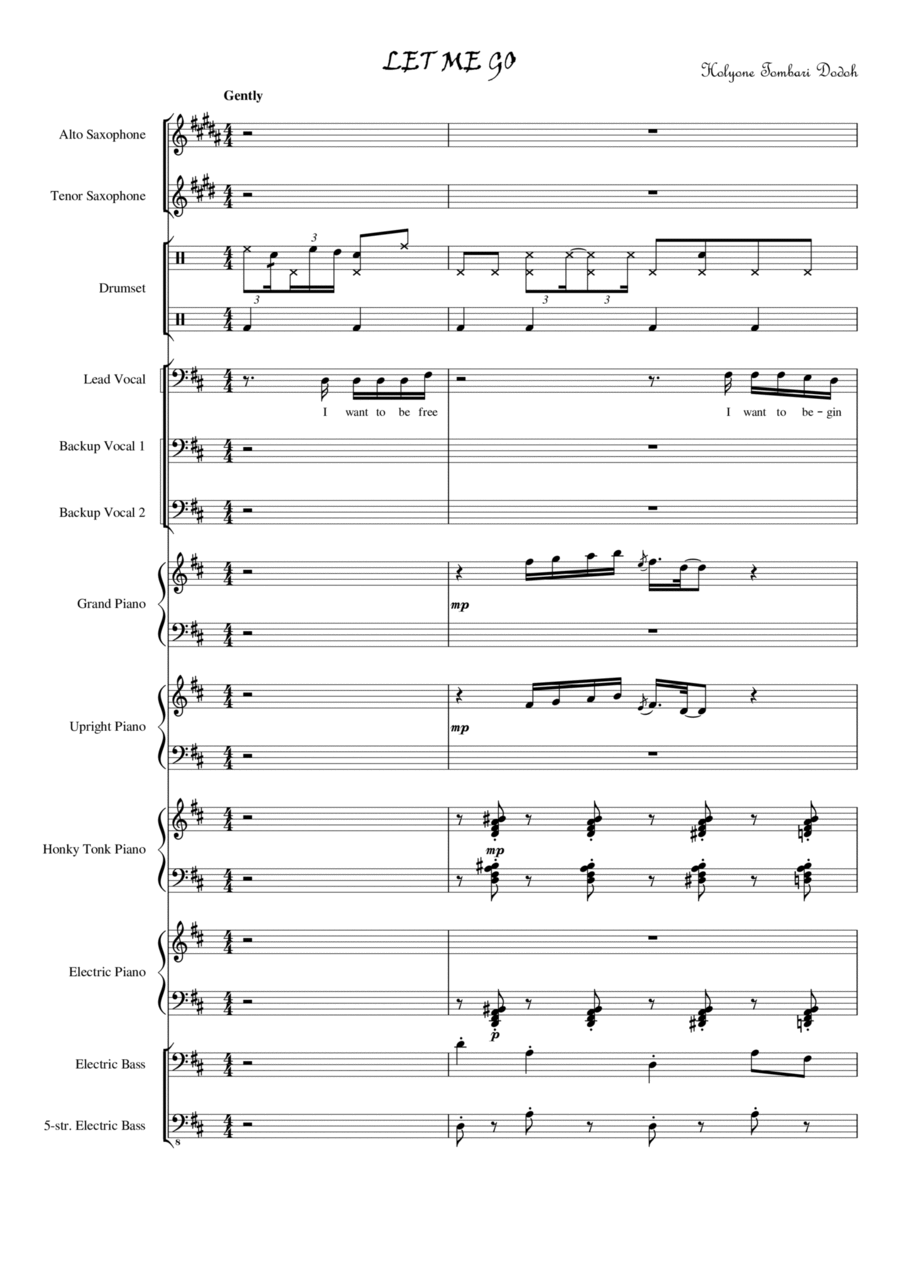Rhythm Section 3-Part Mixed Chorus,Voice - Level 5 - Digital Download SKU: A0.1426655 By Holiyo. By Holyone Tombari Dodoh. Blues,Contemporary,Jazz,Opera,Reggae. Vocal Jazz Ensemble. 81 pages. Holyone Tombari Dodoh #1007357. Published by Holyone Tombari Dodoh (A0.1426655). Lyrics:I want to be free,I want to begin,I want to be me,I want to be happy.I want to be like you,I want to be someone,I want to believe,That I'm ready,Because I'm ready.Trust in me,And believe in tomorrow,I need to sowA good seed nowSo I can reap.When it's time,You'll be happy,Don't make me bitter today,I don't like sadness.Come on please,Let me go,Let me liveThe way I want,Why do you takeAway my pride,Oh come on,Let me go.Come on, you, let go,I'm not that little,This is so hurting,I want to be me.Please don't be offended,I'm asking for freedom,I want to be happy,Just like as you are.Come on please,Let me go,Let me liveThe way I want,Why do you takeAway my pride,Oh come on,Let me go.You're feeling so well,Please let me be,I want to feel well,Can't understand;Why don't you give meThe liberty to choose,How to run my life,Even when you see me,Doing better that way.I love you so much,I want you proud of me,Till the breaking of the day,Why can't you wait.And believe in my path,'Cause I won't let you down,You'd be happy,You'd tell me well done!Come on please,Let me go,Let me liveThe way I want,Why do you takeAway my pride,Oh come on,Let me go.Come on please,Let me go,Let me liveThe way I want,Why do you takeAway my pride,Oh come on,Let me go.
